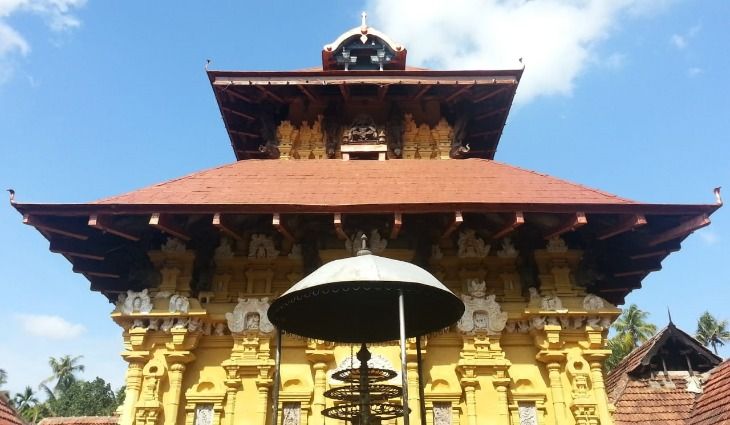Thiruvanchikulam Mahadeva Temple
The known Kerala history begins with Cheras. The Siva of Tiruvanchikulam temple is their tutelary deity. History of Kerala is broadly divided into four divisions. First division among them is Vanchi Epoch. In ‘sangam’ period Tiruvanchikulam is known as Vanji. Dr. S. Krishna Swamy Iyengar, K.G. Sesha Iyer and other historians located Vanchi at Tiruvanchikulam. 27 Sangam poets have sung about Cheras, who are believed to have visited this temple and the nearby Cheraman Palace in ancient days.
Cheraman Perumal, the legendary king of Kerala, is believed to have visited ‘Kailasa’ with his companion Saiva saint, Sundaramoorthi Nayanar from this temple premises. This event is celebrated by the Tamil community on ‘Swathi’ asterism day of Malayalam month ‘Karkatakam’ in this temple even now. According to Tamil Saiva traditions, Tiruvanchikulam temple is the only Saiva Tirupati temple in Kerala.
For centuries, this temple was an administrative centre of the kingdoms of Kochi and Zamorins of Calicut. It is at present, under the administration of Cochin Devaswom Board. The traditional stories says that the sword of Zamorin which is believed to have given to him by Cheraman Perumal was burnt when the Dutch attacked the temple in 1670 CE. Two basements of the temple towers in the western side of the temple reveals to us that the ‘Gopurams’ were pulled down during the attacks. There are sufficient evidences of invasion to this temple during the period of Tippu Sultan. In the ‘Namskara Mandapa’ of the temple there is an inscription which says that the temple had been smashed by a 'Sasthra Bahya' and was renovated under the leadership of Paliyath Govindan Achan (Paliyath Achans are the traditional chief ministers of Kochi Kingdom).
The present temple was built after the attack in 1801 CE. The Linga enshrined at that time was brought from Chidambaram in Tamil Nadu. The two storied sanctum sanctorum is square in shape and is facing east i.e. to the river. In ancient period it is said that the river very close to the temple. The aspect of Siva of this temple is believed to be ‘Sadasiva’. Sadasiva is the highest manifestation of Siva.
The Arattu festival is conducted in the Arabian Sea, which is about 6 kilometres from the temple, even today. The temple has the largest number of sub gods, approx. 33, arguably the highest number in Kerala. Worship is done five times in a day here.
The peculiar feature of this temple is ‘Palliyara’ i.e. sleeping chamber. It is a chamber with a coat, bed and pillows. When the worship services of the main temple is completed around 8 PM, the God and Goddess is taken in a procession to the sleeping chamber and next morning taken back to the temple sanctum sanctorum. Youngsters, who wish for a good spouse also participate in the Palliyara procession and worship the God and Goddess in the Palliyara at that time. On full moon days there is a heavy rush for this worship. The ‘Palliyara’ feature is not seen in any other Kerala temples. Therefore the temple worship pattern is known here as ‘Pradesa Sampradaya’. The temple seems to have some relations with the famous Kodungallur Kurumbha Bhagavathy temple from ancient days. During the Bharani festival of Bhagavathy temple, the pilgrims who came to participate in that festival also used to visit this temple. It has been an age old practice.
Location
Thiruvanchikulam
Main Deity
Lord Shiva
Other Deities
There are 33 sub-deities in this temple including Goddess Parvathi, Lord Ganesh, etc
Festivals
Thiruvathira, Mandalam 41, Sivarathry
Main Offerings
Shanga Abhishekam, Rudra Abhishekam
How To Reach
